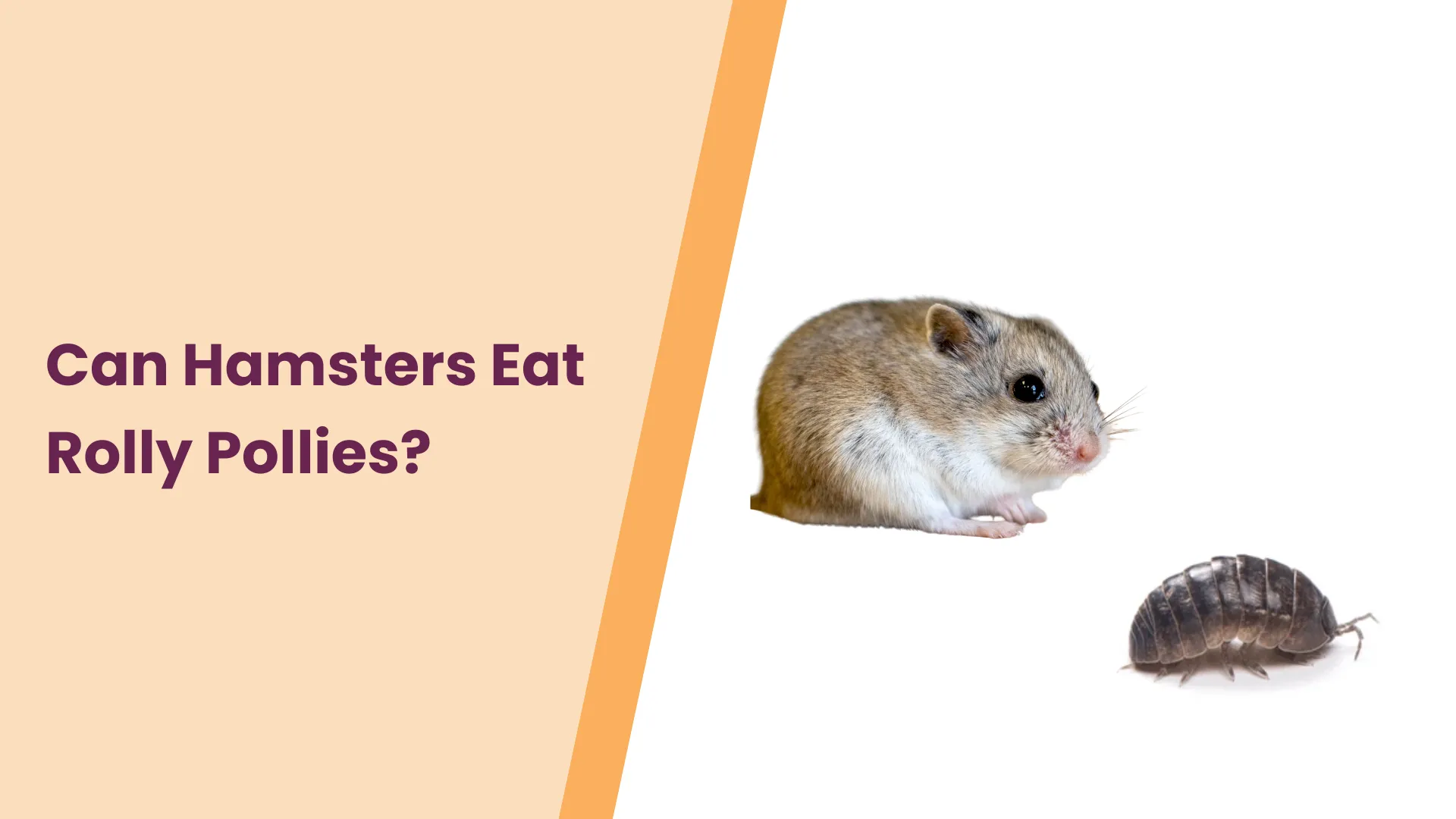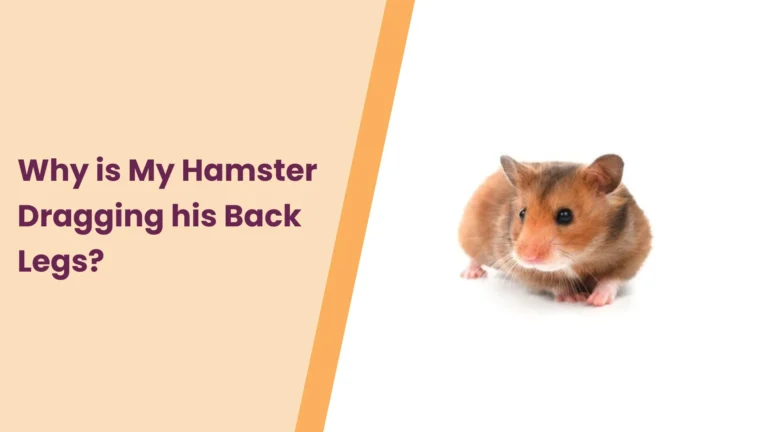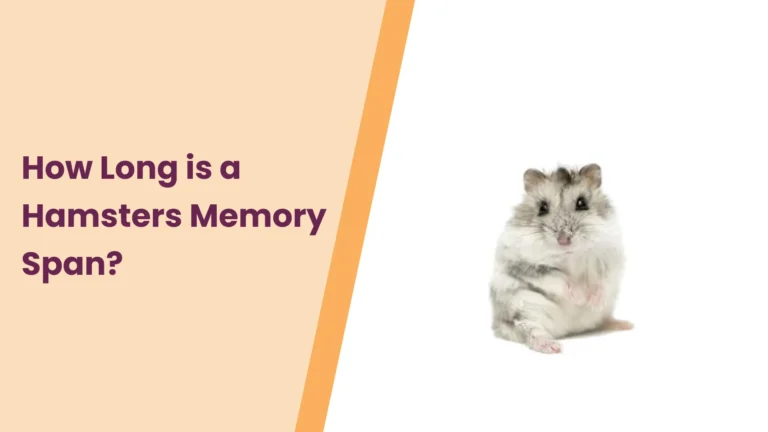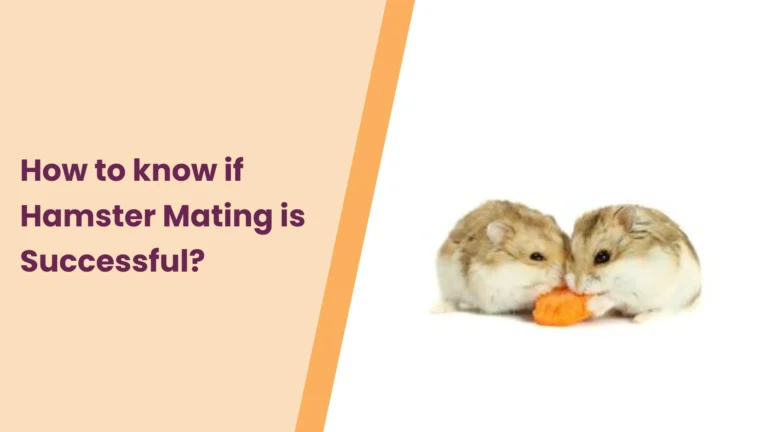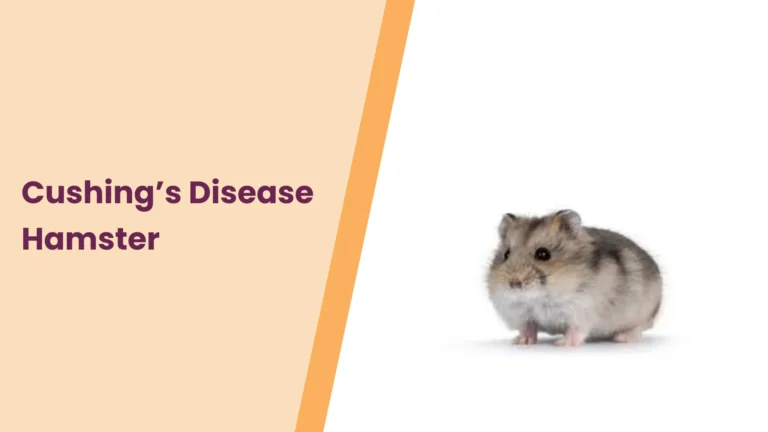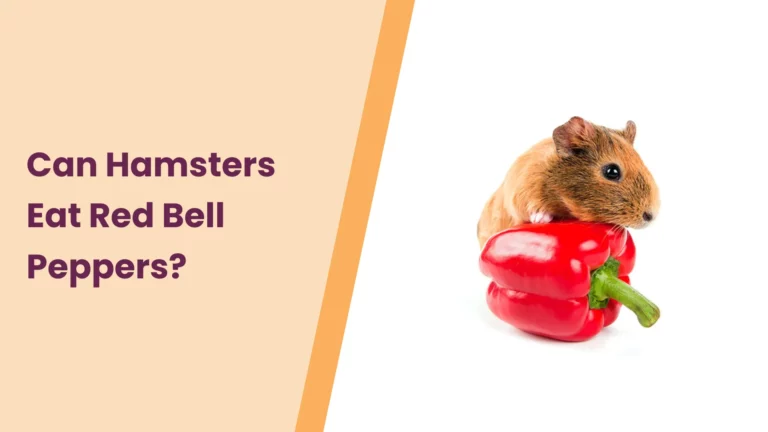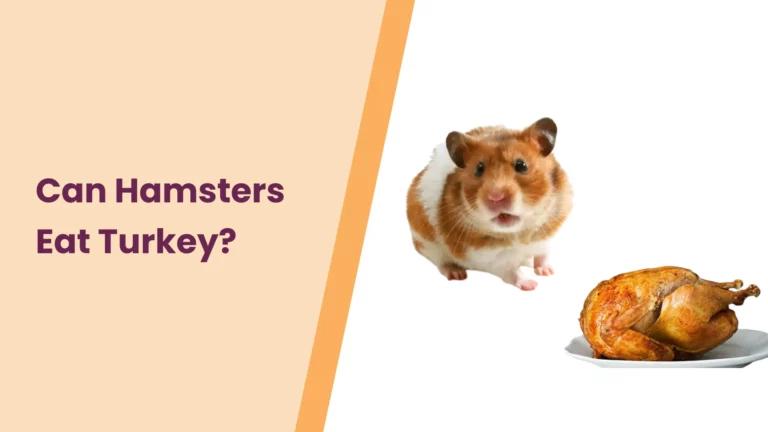Can Hamsters Eat Rolly Pollies? All You Need To Know
Welcome, fellow hamster enthusiasts! As devoted caregivers, we’re constantly exploring ways to enhance our furry friends’ lives, and that often includes pondering over potential additions to their diet. Today, let’s delve into a topic that might make you raise an eyebrow or two: Can hamsters eat rolly pollies? These little armored creatures, also known as pill bugs or woodlice, scuttle around our gardens and capture the curiosity of both humans and hamsters alike.
Join us on this investigative journey as we uncover the secrets of rolly pollies, exploring whether they’re a delightful addition to your hamster’s menu or a potential dietary faux pas. It’s time to demystify the world of hamster nutrition and provide our tiny companions with the best care possible. Let’s roll into the details together!
What are Rolly Pollies? Exploring the Tiny Wonders of Pill Bugs
Rolly pollies, scientifically known as Armadillidiidae but affectionately nicknamed pill bugs or woodlice, are the miniature marvels that capture our attention while tending to our gardens. Picture these charismatic critters small, segmented, and, as their name suggests, capable of rolling into a defensive ball at the slightest hint of danger. With their distinctive armor-like exoskeletons and endearing round bodies, rolly pollies have earned a special place in the backyard ecosystem.
Beyond their charming appearance, rolly pollies play a crucial role in the environment. As decomposers, they assist in breaking down organic matter, contributing to soil enrichment. This segment of the blog will unravel the fascinating characteristics of these tiny creatures, providing you with a deeper understanding of the natural wonders that might just find their way into your hamster’s world.
Hamster Diet Basics: Nourishing Your Furry Friend
Our furry companions, those delightful balls of fluff we call hamsters, have dietary needs as unique as their personalities. Understanding the basics of a hamster’s diet is key to ensuring they lead happy and healthy lives. In the wild, hamsters are foragers, munching on a variety of seeds, grains, and insects. As responsible caregivers, our goal is to replicate this balanced diet within the confines of their cozy cages.
A well-rounded hamster diet typically includes high-quality commercial hamster pellets, fresh vegetables, and occasional fruit treats. These tiny omnivores also benefit from the addition of protein sources like mealworms. Crafting a diet that mirrors their natural inclinations helps maintain optimal health, a shiny coat, and that signature sparkle in their eyes.
So, how do rolly pollies fit into this gastronomic equation? As we unravel the mysteries of these tiny crustaceans, we’ll navigate the delicate balance between curiosity and nutritional responsibility. Join us on this journey as we explore whether rolly pollies can be more than just fascinating backyard inhabitants; they might just become a quirky addition to your hamster’s menu!
Rolly Pollies and Hamsters: A Culinary Adventure or Potential Pitfall?
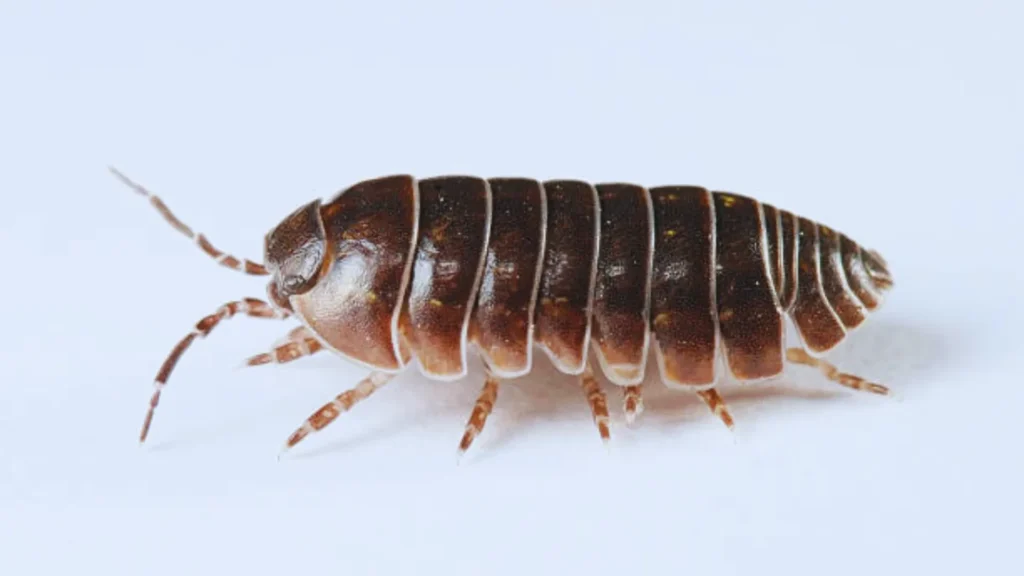
As we embark on the quest to decipher whether our beloved hamsters can feast on rolly pollies, the question arises: can these quirky garden dwellers be more than just a fascinating spectacle? While hamsters are known for their diverse diets, it’s crucial to approach the introduction of new foods with caution and consideration.
In our exploration, we’ll weigh the potential benefits of incorporating rolly pollies into your hamster’s menu. These diminutive critters offer a source of protein and essential nutrients, which could contribute to a more diverse and enriched diet. However, before you rush to introduce your hamster to this novel treat, it’s essential to navigate the potential pitfalls.
Understanding the delicate balance between culinary curiosity and nutritional responsibility is paramount. Not all that captivates our hamsters’ interest is necessarily safe for consumption. Join us as we scrutinize the risks and rewards, aiming to strike the perfect balance in crafting a diet that not only caters to their taste buds but also prioritizes their well-being. The journey to unravel the mysteries of rolly pollies and hamsters continues, so let’s tread carefully and make informed choices for our tiny companions!
Risks and Considerations: Navigating the Potential Hazards
In the whimsical world of hamster care, the introduction of new treats often feels like embarking on a culinary adventure. When it comes to rolly pollies, those enchanting garden explorers, the journey involves not just curiosity but also a keen awareness of potential risks and considerations.
While rolly pollies can offer a protein-packed addition to your hamster’s diet, it’s crucial to address the potential hazards. These adorable crustaceans might carry pesticides or other substances harmful to your hamster. Additionally, some hamsters may have allergic reactions or sensitivities to new foods, leading to digestive upset or discomfort.
As conscientious caregivers, it’s our responsibility to tread carefully and be vigilant. Before introducing rolly pollies to your hamster’s menu, consider their source. Opt for pesticide-free environments, and observe your hamster closely for any signs of distress or adverse reactions. Moderation is key, as overindulgence in any new treat can upset the delicate balance of a hamster’s digestive system.
Join us as we delve into the realm of responsible hamster care, exploring the risks and considerations that accompany the delightful prospect of broadening our hamsters’ palates. After all, a happy hamster is a healthy hamster, and that’s a culinary philosophy we can all savor!
How to Introduce Rolly Pollies Safely: A Gentle Culinary Transition
The prospect of introducing rolly pollies into your hamster’s diet is akin to orchestrating a delicate ballet between curiosity and caution. As we embark on this culinary journey, it’s essential to master the art of safe introductions, ensuring our furry companions savor the experience without compromising their well-being.
1. Gradual Introduction: Like any new treat, rolly pollies should be introduced gradually. Start with a small portion to observe your hamster’s reaction and monitor for any signs of allergies or digestive issues.
2. Fresh and Pesticide-Free: Prioritize rolly pollies sourced from pesticide-free environments. This minimizes the risk of exposing your hamster to harmful substances that could undermine their health.
3. Watch for Allergies: Hamsters, like humans, can have allergies. Keep a close eye on your hamster after introducing rolly pollies, looking for symptoms like itchiness, swelling, or changes in behavior that may indicate an adverse reaction.
4. Moderation is Key: While rolly pollies can provide valuable nutrients, moderation is crucial. Overindulgence in new treats can upset the delicate balance of your hamster’s digestive system.
5. Consult Your Veterinarian: If you have any concerns or questions about introducing rolly pollies or any new threats to your hamster’s diet, it’s always wise to consult with your veterinarian. They can offer personalized advice based on your hamster’s specific needs and health status.
By approaching the introduction of rolly pollies with patience and attentiveness, we can create a culinary experience that enriches our hamsters’ lives while safeguarding their health. Join us in mastering the art of culinary harmony as we strive to make every dining experience a joy for our beloved hamster companions!
Signs of Allergies or Discomfort: Decoding Your Hamster’s Silent Cues
As devoted hamster caregivers, it’s our responsibility to become fluent in the silent language our tiny companions speak. When introducing new treats like rolly pollies, keen observation becomes the key to understanding whether our hamsters are embracing the experience with delight or signaling discomfort.
1. Changes in Behavior: Hamsters are creatures of habit, so any sudden shifts in behavior can be telling. If your hamster becomes unusually lethargic, agitated, or withdraws from social interactions, it may be a sign of discomfort.
2. Digestive Upset: Keep a close eye on your hamster’s digestive patterns. Diarrhea, constipation, or changes in stool consistency could indicate that their delicate digestive system is reacting to the new treat.
3. Scratching or Itching: Allergies can manifest through physical symptoms. If you notice your hamster excessively scratching, grooming, or displaying signs of irritation, it could be a reaction to the introduced food.
4. Respiratory Changes: Watch for any signs of respiratory distress, such as wheezing, labored breathing, or nasal discharge. These could be indicators of an allergic reaction.
5. Monitor Overall Well-being: Beyond specific symptoms, pay attention to your hamster’s overall well-being. A healthy hamster is active, alert, and exhibits a glossy coat. Any deviations from their usual vibrancy may warrant closer scrutiny.
Our hamsters may not communicate discomfort in words, but their subtle cues speak volumes. By tuning in to their behaviors and physical indicators, we can ensure that the introduction of rolly pollies is a positive experience. Let’s embark on this journey of understanding and nurture a bond built on attentiveness and care. After all, our hamsters’ well-being is a language of love we’re eager to comprehend!
The Verdict: Can Hamsters Eat Rolly Pollies? Unraveling the Culinary Mystery
The moment of truth has arrived as we seek to demystify the question on every hamster enthusiast’s mind—can our beloved furry companions indulge in the whimsical world of rolly pollies? After navigating through the intricacies of their diet, potential benefits, risks, and safe introduction practices, it’s time to render the verdict.
While rolly pollies can offer a protein-packed addition to your hamster’s diet, the verdict comes with a caveat. The key lies in the details—sourcing rolly pollies from pesticide-free environments, observing your hamster for any signs of discomfort, and introducing them gradually with moderation.
The decision to include rolly pollies in your hamster’s culinary repertoire should align with your hamster’s unique preferences, health considerations, and your own comfort level as a caregiver. Remember, alternatives abound—fresh vegetables, fruits, seeds, and commercial treats offer a diverse array of options to pamper your hamster’s taste buds.
Alternative Treats: A Palette of Delight for Your Hamster
Variety is the spice of life, and hamsters are no exception to this culinary wisdom. While the prospect of treating your furry friend to rolly pollies is intriguing, there’s a vibrant array of alternative treats that can add both flavor and nutrition to your hamster’s diet.
1. Fresh Vegetables: Crisp, colorful, and packed with essential vitamins, fresh vegetables make for excellent hamster treats. Consider offering small portions of cucumber, broccoli, carrots, or bell peppers. Just be sure to introduce new veggies gradually.
2. Fruits in Moderation: While fruits are a delightful indulgence, they should be offered in moderation due to their sugar content. Slices of apple, pear, or a small piece of banana can be a sweet and wholesome addition.
3. Nutritious Seeds: Hamsters are natural foragers, and seeds provide both mental stimulation and nutritional value. Sunflower seeds, pumpkin seeds, and flaxseeds are popular choices, but remember to control the portion sizes.
4. Commercial Hamster Treats: Explore the diverse range of commercial hamster treats available in pet stores. These treats are formulated to meet your hamster’s dietary needs and often come in various flavors and textures for added excitement.
5. Mealworms and Insects: For a protein boost, consider offering dried mealworms or small insects. These treats mimic the natural hunting and foraging behavior of hamsters.
While rolly pollies may be on the hamster menu for some, it’s comforting to know that the world of treats is vast and varied. Experiment with different options to discover what tickles your hamster’s taste buds while ensuring a well-rounded and nutritious diet. Join us in creating a culinary landscape that turns treat time into a daily celebration of joy and health for our cherished hamster companions!
Conclusion
In the intricate tapestry of hamster care, the exploration of rolly pollies as a treat is just one chapter. As devoted caregivers, our pursuit is not just about satisfying dietary curiosity but fostering a connection with our tiny companions. While the verdict on hamsters indulging in rolly pollies may vary, what remains unwavering is our commitment to their well-being.
Embrace the joy of offering diverse treats, from fresh vegetables to commercially crafted delights, ensuring a rich and varied diet for your hamster. The culinary journey is a shared experience, a delightful bond that transcends the confines of a cage. So, whether your hamster becomes a rolly polly connoisseur or savors alternative treats, let each nibble be a celebration of love, health, and the cherished connection between you and your pint-sized friend. Here’s to the joyous symphony of treats that colors the canvas of hamster care with vibrancy and care!
Related Posts:
Can Hamsters Eat Grasshoppers?
“Our hamster care journey doesn’t end with words on a screen—it extends to the vibrant community of fellow hamster enthusiasts. Have a rolly polly tale to share or are curious about others’ experiences? Drop a comment below! Your insights, questions, and anecdotes not only enrich our community but also spark lively conversations that benefit everyone. Let’s create a hub of shared wisdom that resonates far and wide.
If you found our exploration into hamster culinary delights delightful, consider sharing it on your favorite platforms. Spread the love on social media or hamster forums, inviting friends and fellow caregivers to join the conversation. Every click, comment, and share fuels the passion for responsible and joyful hamster care. Together, let’s make our hamster community a thriving space where knowledge blooms and friendships flourish!”–HamsterPit

